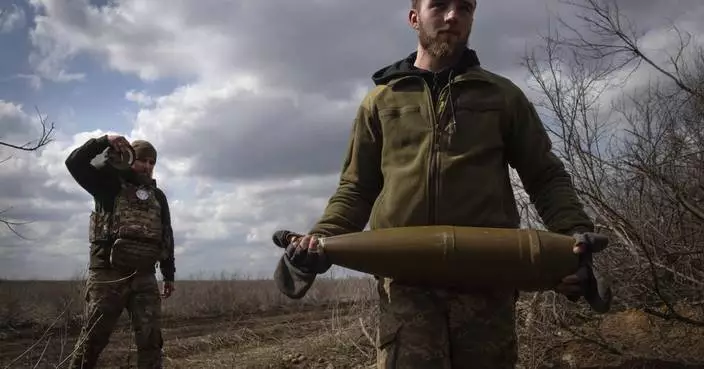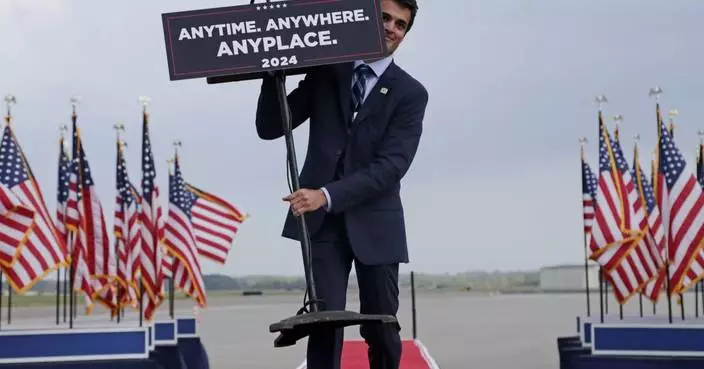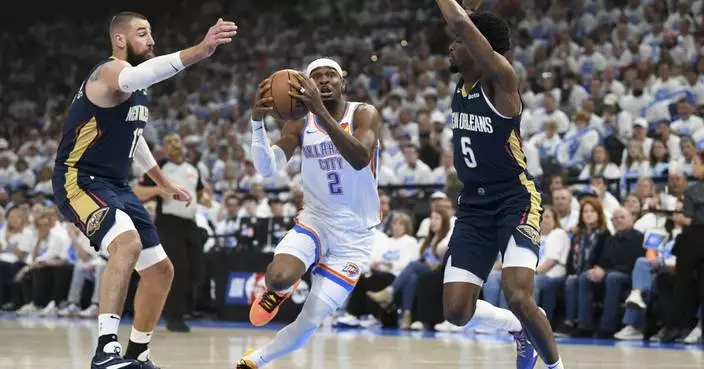The U.S. Justice Department will double the funding it grants tribes for public safety programs and crime victims as it seeks to tackle the high-rates of violence against Native American women, a top official said.
In an interview, the Justice Department's third-highest ranking official told The Associated Press that officials are seeking, in part, to address the issue with more than $113 million in public safety funding for 133 tribes and Alaska Native villages that will be announced Wednesday, and another $133 million that will be awarded in the coming weeks to tribes to help serve Native American crime victims.
Click to Gallery
The U.S. Justice Department will double the funding it grants tribes for public safety programs and crime victims as it seeks to tackle the high-rates of violence against Native American women, a top official said.
"We recognize the serious nature of the problem we're facing and we are trying through a variety of strategies — both through the funding and the use of our own prosecutors, and building up awareness — to address these issues," said Jesse Panuccio, the Justice Department's acting associate attorney general.
The Justice Department announcement follows years of federal legislative efforts that have attempted to fix a system that many say has left Native American women especially vulnerable to violent crime. Legal experts and victims' advocates have blamed both underfunded police departments that lack the resources to investigate crimes, and lingering jurisdictional gaps among federal, tribal and local law enforcement agencies that often resulted in cases going unprosecuted.
A measure to expand the Violence Against Women's Act calls for similar proposals and for amending laws to give tribes authority to prosecute non-Native Americans suspected of selling tribal members for sex or running human trafficking rings. On Tuesday, the U.S. Senate voted to extend the Violence Against Women Act in its current form for two more months, delaying a vote on proposals to expand it.
Panuccio said the department's approach to tackling violence against Native American women focuses on partnering with tribes to assign more prosecutors capable of handling cases in federal and tribal courts, and supporting tribal law enforcement and victims.
The announcement comes amid increased focus on the deaths and disappearances of Native American women and girls in the United States.
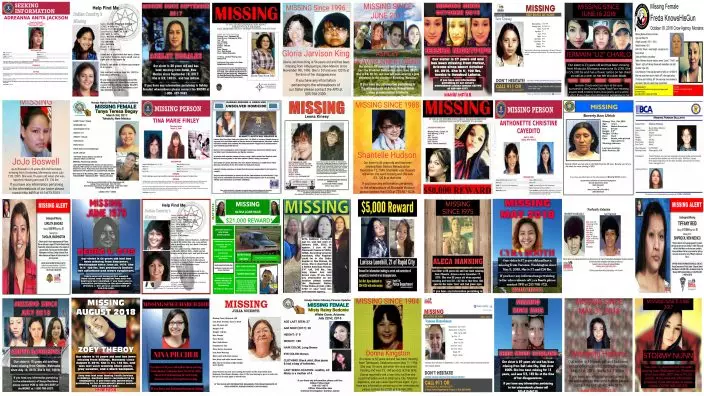
FILE - This file combination of images from various law enforcement agencies and organizations shows posters of missing and murdered Native American women and girls as of September 2018. No one knows precisely how many there are because authorities don't have reliable statistics. A top U.S. Justice Department official says it’s doubling the amount of federal funding for tribal public safety and crime victims as it seeks to tackle the high-rates of violence against Native American women. The announcement on Wednesday, Sept. 19, 2018, comes amid increased focus on the deaths and disappearances of Native American women and girls in the U.S. (AP, File)
"We recognize the serious nature of the problem we're facing and we are trying through a variety of strategies — both through the funding and the use of our own prosecutors, and building up awareness — to address these issues," said Jesse Panuccio, the Justice Department's acting associate attorney general.
For decades, tribes largely had been unable to directly access money in a federal program aimed at supporting crime victims nationwide — even as federal figures showed more than half of Native American women had encountered sexual or domestic violence at some point during their lives. On some reservations, Native American women are murdered at a rate more than 10 times the national average.
Nationwide, figures at the end of 2017 showed a disproportionate number of them listed as missing. An AP report this month found based on figures obtained from an FBI database that there were 633 open missing person cases for Native American women, who comprise 0.4 percent of the U.S. population but 0.7 percent of cases overall. African-American women were the only other group to be overrepresented in the caseload compared to their proportion of the population.
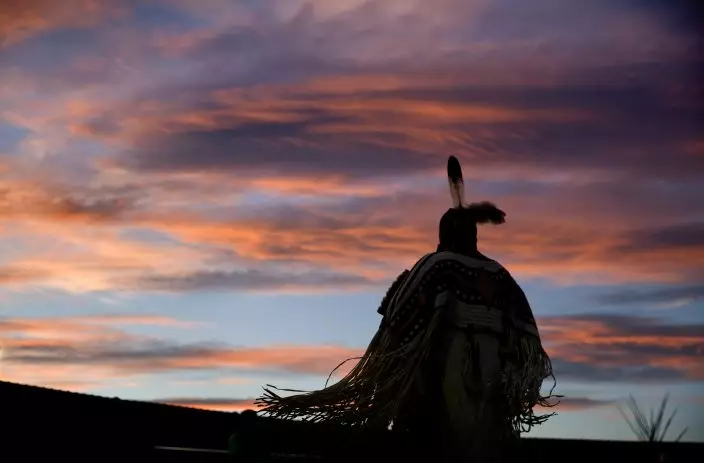
FILE - In this July 13, 2018 file photo, a woman performs a traditional Native American dance during the North American Indian Days celebration on the Blackfeet Indian Reservation in Browning, Mont. A top U.S. Justice Department official says it’s doubling the amount of federal funding for tribal public safety and crime victims as it seeks to tackle the high-rates of violence against Native American women. An announcement on Wednesday, Sept. 19, 2018, comes amid increased focus on the deaths and disappearances of Native American women and girls in the United States. (AP PhotoDavid Goldman, File)
The Justice Department announcement follows years of federal legislative efforts that have attempted to fix a system that many say has left Native American women especially vulnerable to violent crime. Legal experts and victims' advocates have blamed both underfunded police departments that lack the resources to investigate crimes, and lingering jurisdictional gaps among federal, tribal and local law enforcement agencies that often resulted in cases going unprosecuted.
The announcement also comes as a series of congressional proposals seek to address how authorities' handle and track reports of missing women on reservations.
For example, a law proposed by U.S. Sen. Heidi Heitkamp, a Democrat from North Dakota, seeks to establish protocols for handling cases of missing and murdered Native Americans. It also would require annual reports to Congress on the number of missing and murdered Native American women, saying accurate statistics could potentially help authorities detect patterns and solve more cases.

FILE - I this July 14, 2018 file photo, Jenna Loring, left, the aunt of Ashley HeavyRunner Loring, cries with her cousin, Lissa Loring, during a traditional blanket dance before the crowd at the North American Indian Days celebration on the Blackfeet Indian Reservation in Browning, Mont. The 'dance' was held to raise awareness and funds for Ashley's search. A top U.S. Justice Department official says it’s doubling the amount of federal funding for tribal public safety and crime victims as it seeks to tackle the high-rates of violence against Native American women. An announcement on Wednesday, Sept. 19, 2018, comes amid increased focus on the deaths and disappearances of Native American women and girls in the United States. (AP PhotoDavid Goldman, File)
A measure to expand the Violence Against Women's Act calls for similar proposals and for amending laws to give tribes authority to prosecute non-Native Americans suspected of selling tribal members for sex or running human trafficking rings. On Tuesday, the U.S. Senate voted to extend the Violence Against Women Act in its current form for two more months, delaying a vote on proposals to expand it.
"There is still much work to do," Heitkamp said.
The Justice Department has not expressed support or opposition for the proposals to expand tribal jurisdiction over non-Native Americans. Under the current law, tribes are able to prosecute people who aren't tribal members only in assault cases where the victim is a woman and knows her assailant.
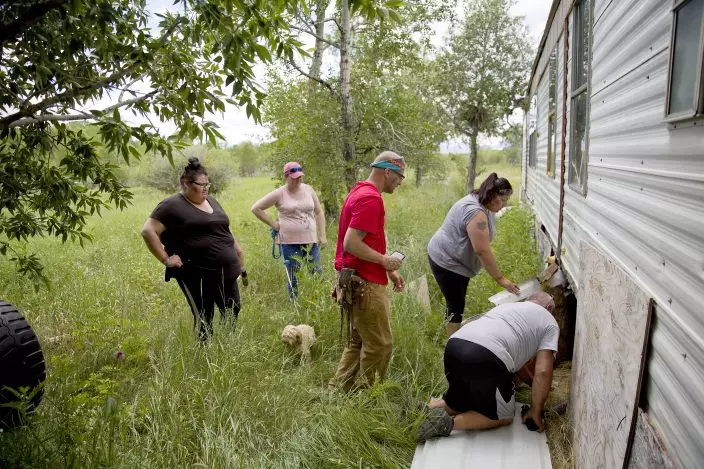
FILE - In this July 11, 2018 file photo, Kimberly Loring, from left, Staci Salois, Randy Ortiz, Lissa Loring and George A. Hall, look for clues under a trailer during a search in Valier, Mont., for the Loring's sister and cousin, Ashley HeavyRunner Loring, who went missing in 2017 from the Blackfeet Indian Reservation. A top U.S. Justice Department official says it’s doubling the amount of federal funding for tribal public safety and crime victims as it seeks to tackle the high-rates of violence against Native American women. The announcement on Wednesday, Sept. 19, 2018, comes amid increased focus on the deaths and disappearances of Native American women and girls in the United States. (AP PhotoDavid Goldman, File)
Panuccio said the department's approach to tackling violence against Native American women focuses on partnering with tribes to assign more prosecutors capable of handling cases in federal and tribal courts, and supporting tribal law enforcement and victims.
For Juana Majel-Dixon, co-chair of a National Congress of American Indians' taskforce established to address violence against women, the increase in funding is welcome, though she still questions whether the money will stretch far enough in serving victims.
"When you think about the enormity of (the number of) victims we're talking about, the money being provided has been graciously received," she said. "But it's not enough."
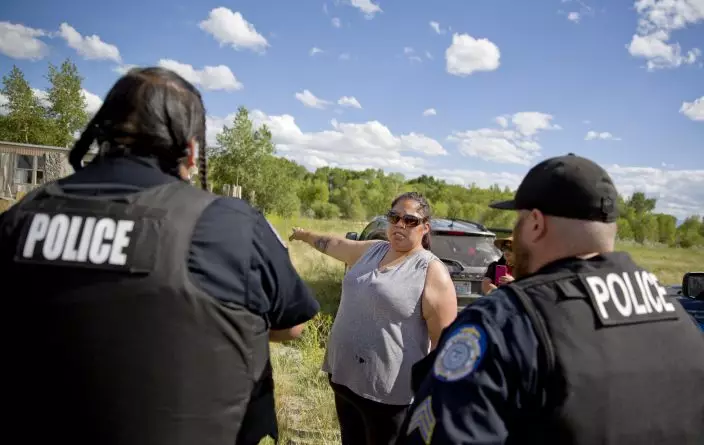
FILE - In this July 11, 2018 file photo, Lissa Loring points Blackfeet law enforcement officers to a trailer in Valier, Mont., where she believes clues have been found during a search for her cousin, Ashley HeavyRunner Loring, who went missing last year from the Blackfeet Indian Reservation. A top U.S. Justice Department official says it’s doubling the amount of federal funding for tribal public safety and crime victims as it seeks to tackle the high-rates of violence against Native American women. The announcement on Wednesday, Sept. 19, 2018, comes amid increased focus on the deaths and disappearances of Native American women and girls in the United States. (AP PhotoDavid Goldman, File)
Mary Hudetz can be reached at mhudetz@ap.org or on Twitter @marymhudetz. Read AP's full coverage on missing Native American women: https://apnews.com/tag/MissingInIndianCountry .
KYIV, Ukraine (AP) — A big, new package of U.S. military aid will help Ukraine avoid defeat in its war with Russia. Winning will still be a long slog.
The arms and ammunition in the $61 billion military aid package should enable Ukraine to slow the Russian army's bloody advances and block its strikes on troops and civilians. And it will buy Ukraine time — for long-term planning about how to take back the fifth of the country now under Russian control.
“Ultimately it offers Ukraine the prospect of staying in the war this year,” said Michael Clarke, visiting professor in war studies at King’s College London. “Sometimes in warfare you’ve just got to stay in it. You’ve just got to avoid being rolled over.”
The U.S. House of Representatives approved the package on Saturday after months of delays by some Republicans wary of U.S. involvement overseas. It was passed by the Senate on Tuesday, and President Joe Biden said he would sign it Wednesday.
The difference could be felt within days on the front line in eastern and southern Ukraine, where Russia’s much larger army has been slowly taking territory against massively outgunned Ukrainian forces.
The aid approval means Ukraine may be able to release artillery ammunition from dwindling stocks that it has been rationing. More equipment will come soon from American stocks in Poland and Germany, and later from the U.S.
The first shipments are expected to arrive by the beginning of next week, said Davyd Arakhamia, a lawmaker with Ukrainian President Volodymyr Zelenskyy’s Servant of the People party.
But opposition lawmaker Vadym Ivchenko, a member of the Ukrainian parliament’s National Security, Defense and Intelligence Committee, said logistical challenges and bureaucracy could delay shipments to Ukraine by two to three months, and it would be even longer before they reach the front line.
While details of the shipments are classified, Ukraine’s most urgent needs are artillery shells to stop Russian troops from advancing, and anti-aircraft missiles to protect people and infrastructure from missiles, drones and bombs.
What’s coming first is not always what front-line commanders need most, said Arakhamia, the Ukrainian lawmaker. He said that even a military giant like the U.S. does not have stockpiles of everything.
“The logic behind this first package was, you (the U.S.) finds our top priorities and then you see what you have in the warehouses,” Arakhamia said. “And sometimes they do not match.”
Hope for future breakthroughs for Ukraine still hangs on more timely deliveries of Western aid, lawmakers acknowledge.
Many experts believe that both Ukraine and Russia are exhausted by two years of war and won’t be able to mount a major offensive — one capable of making big strategic gains — until next year.
Still, Russia is pushing forward at several points along the 1,000-kilometer (600-mile) front, using tanks, wave after wave of infantry troops and satellite-guided gliding bombs to pummel Ukrainian forces. Russia is also hitting power plants and pounding Ukraine’s second-largest city, Kharkiv, which is only about 30 kilometers (some 20 miles) from the Russian border.
Ivchenko said the goal for Ukraine’s forces now is to “hold the line” until the bulk of new supplies arrive by mid-summer. Then, they can focus on trying to recapture territory recently lost in the Donetsk region.
“And probably ... at the end of summer we’ll see some movement, offensive movement of the Ukrainian armed forces,” he said.
Some military experts doubt Ukraine has the resources to mount even small offensives very soon.
The U.S. funding “can probably only help stabilize the Ukrainian position for this year and begin preparations for operations in 2025,” said Matthew Savill, director of military sciences at the Royal United Services Institute, a think tank.
In the best-case scenario for Ukraine, the American aid will give commanders time to reorganize and train its army — applying lessons learned from its failed summer 2023 offensive. It may also galvanize Ukraine’s allies in Europe to increase aid.
“So this just wasn’t about Ukraine and the United States, this really affected our entire 51-country coalition,” said U.S. Congressman Bill Keating, a Democrat who visited Kyiv on Monday as part of a four-member congressional delegation.
Zelenskyy insists Ukraine's war aim is to recapture all its territory from Russia — including Crimea, seized illegally in 2014. Even if the war ultimately ends through negotiation, as many experts believe, Ukraine wants to do that from as strong a position as possible.
Whatever happens on the battlefield, Ukraine still faces variables beyond its control.
Former U.S. President Donald Trump, who seeks to retake the White House in the November election, has said he would end the war within days of taking office. And the 27-nation Europe Union includes leaders like Hungarian President Viktor Orbán and Slovakian Prime Minister Richard Fico, who have opposed arming Ukraine.
Ukraine’s allies have held back from supplying some arms out of concern about escalation or depleting their own stocks. Ukraine says that to win the war it needs longer-range missiles it could use for potentially game-changing operations such as cutting off occupied Crimea, where's Russia's Black Sea fleet is based.
It wants Army Tactical Missile Systems, known as ATACMs, from the U.S. and Taurus cruise missiles from Germany. Both governments have resisted calls to send them because they are capable of striking targets deep within Russian territory.
The new bill authorizes the president to send Ukraine ATACMS “as soon as practicable.” It's unclear what that will mean in practice.
Sometimes, promised weapons have arrived late, or not at all. Zelenskyy recently pointed out that Ukraine is still waiting for the F-16 fighter jets it was promised a year ago.
Meanwhile, Russia is using its advantage in troops and weapons to push back Ukrainian forces, perhaps seeking to make maximum gains before Ukraine's new supplies arrive.
For weeks it has pummeled the small eastern city of Chasiv Yar, at the cost of 900 soldiers killed and wounded a day, according to the U.K. Ministry of Defense.
Capturing the strategically important hill town would allow them to move toward Sloviansk and Kramatorsk, key cities Ukraine controls in the eastern region of Donetsk. It would be a significant win for Russian President Vladimir Putin, who Western officials say is bent on toppling Ukraine’s pro-Western government.
Russian pressure was aimed not just at gaining territory, but on undermining Zelenskyy and bolstering critics who say his war plan is failing, said Clarke of King's College London.
The U.S. aid package decreases the likelihood of a political crisis in Ukraine, and U.S. Speaker Mike Johnson deserves credit for pushing it through Congress, he said.
"He held history in his hands,” Clarke said.
Follow AP’s coverage of the war in Ukraine at https://apnews.com/hub/russia-ukraine

From left, U.S. representatives Nathaniel Moran, R-Tx, Tom Kean Jr, R-NJ, Bill Keating, D-Mass, and Madeleine Deane, D-Pa, talk to journalists during a joint news conference outside Saint Michael cathedral in Kyiv, Ukraine, Monday, April 22, 2024. A newly approved package of $61 billion in U.S. aid may prevent Ukraine from losing its war against Russia. But winning it will be a long slog. (AP Photo/Francisco Seco)
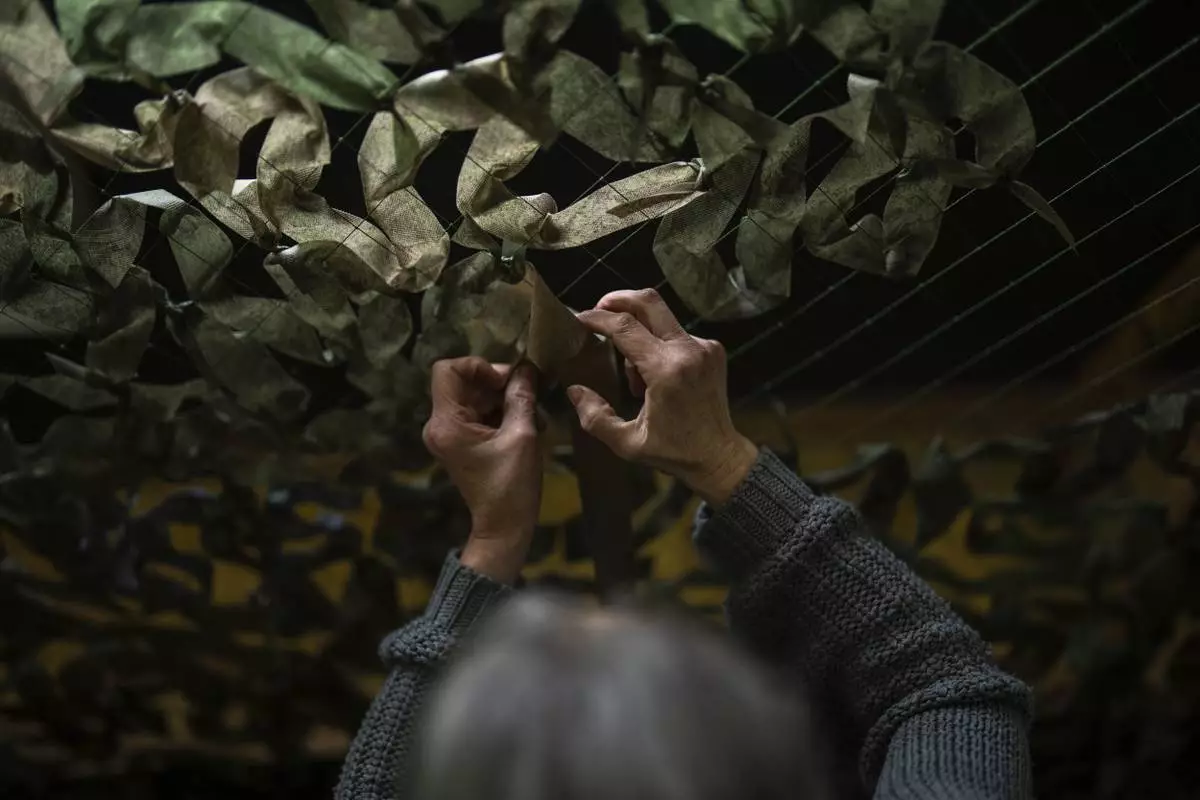
A volunteer makes a camouflage net at a facility producing material for Ukrainian soldiers in Kyiv, Ukraine, Monday, April 22, 2024. A newly approved package of $61 billion in U.S. aid may prevent Ukraine from losing its war against Russia. But winning it will be a long slog. (AP Photo/Francisco Seco)
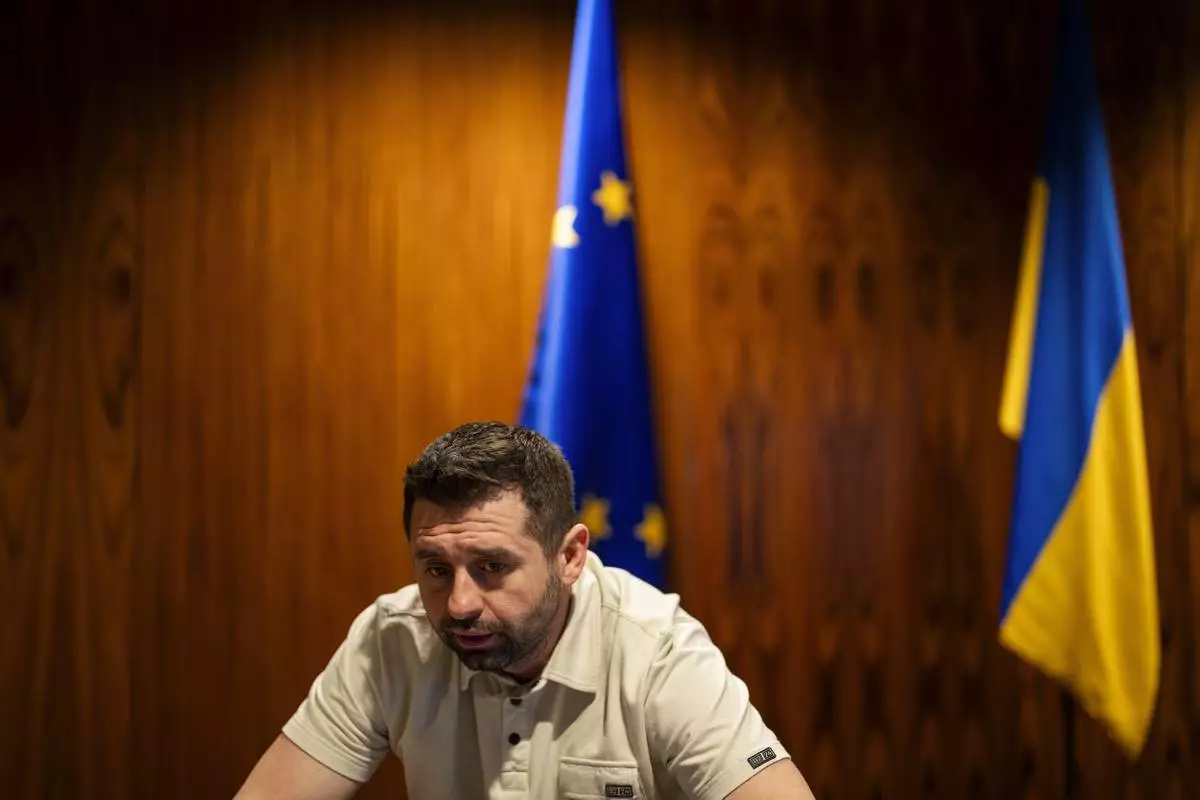
Davyd Arakhamia, a lawmaker with Ukrainian President Volodymyr Zelenskyy's Servant of the People party, talks during an interview with Associated Press in Kyiv, Ukraine, Monday, April 22, 2024. (AP Photo/Francisco Seco)
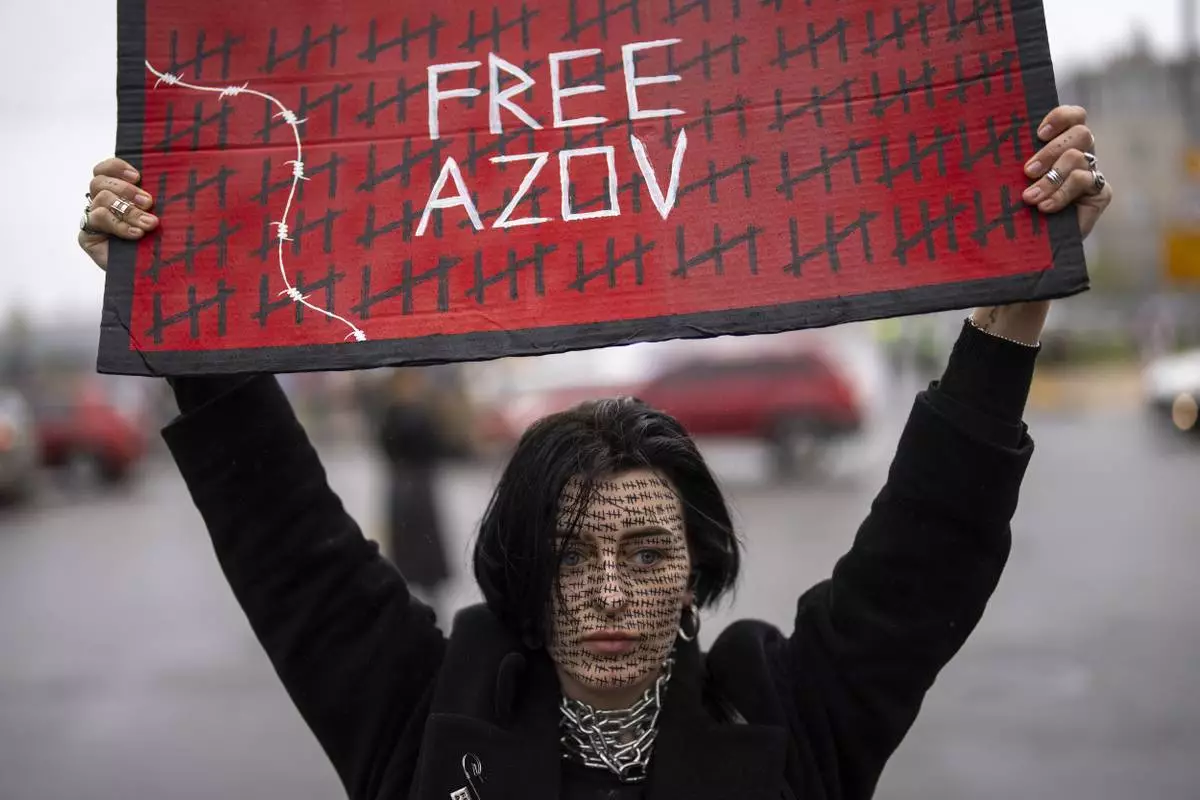
A woman rallies to raise awareness on the fate of Ukrainian prisoners of war in Kyiv, Ukraine, Sunday, April 21, 2024. (AP Photo/Francisco Seco)
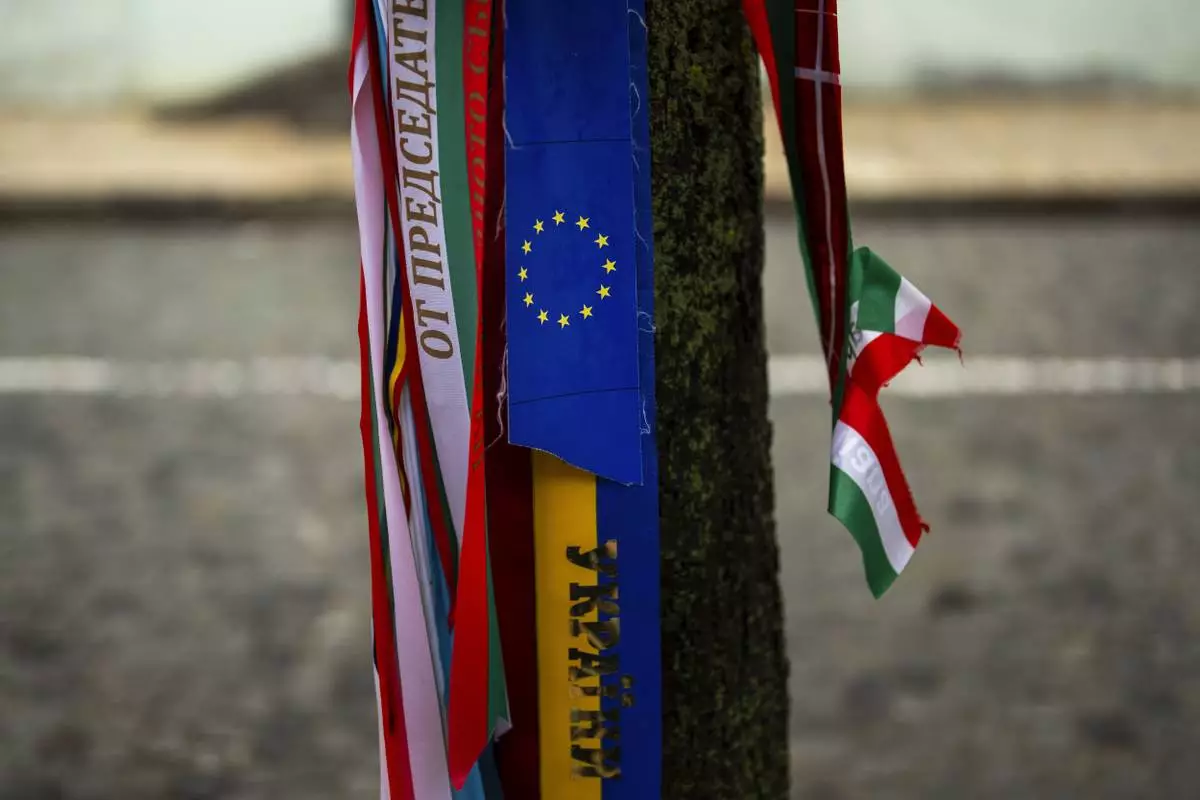
Ribbons with the colors of the European Union and Ukraine are attached to a tree next to memorial wall of Ukrainian soldiers killed during the war in Kyiv, Ukraine, Monday, April 22, 2024. (AP Photo/Francisco Seco)
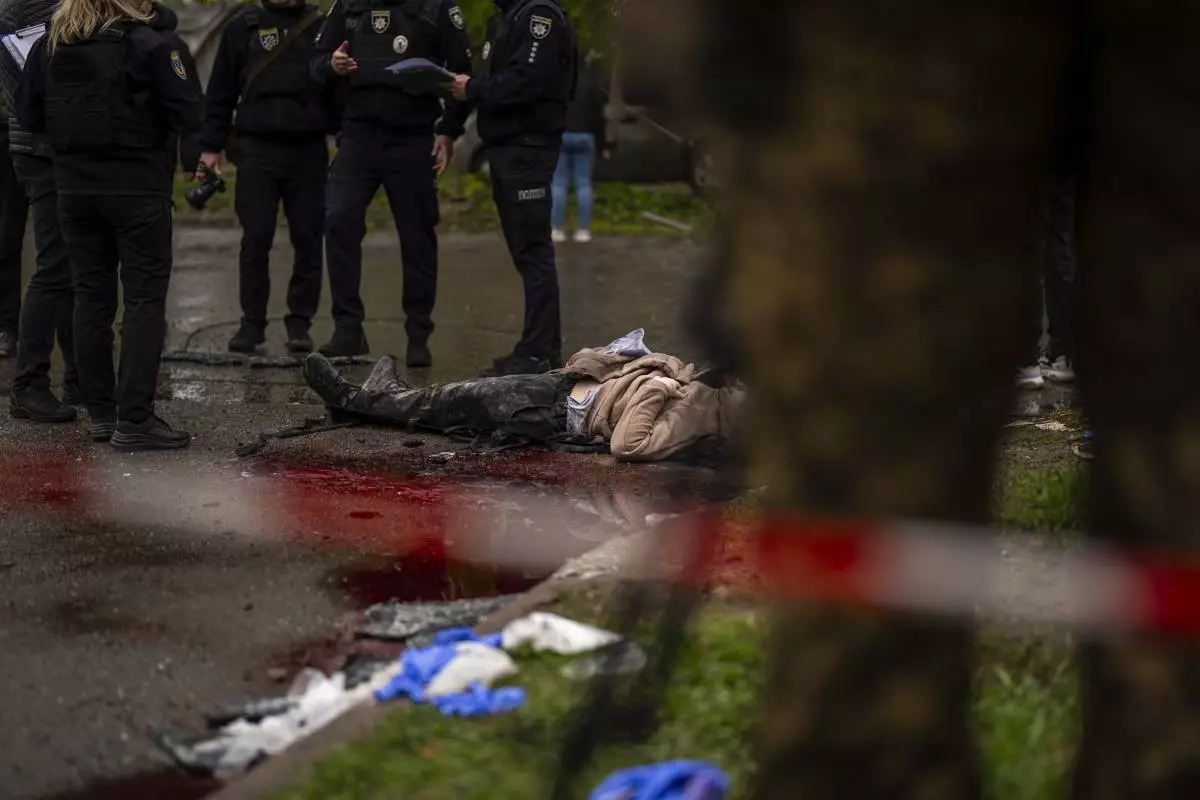
The body of a woman killed by Russian bombardment in Chernihiv, Ukraine, Wednesday, April 17, 2024. (AP Photo/Francisco Seco)

Soldiers carry the coffins of two Ukrainian army sergeants during their funeral in Lviv, Ukraine, Tuesday, April 16, 2024. (AP Photo/Francisco Seco)


















